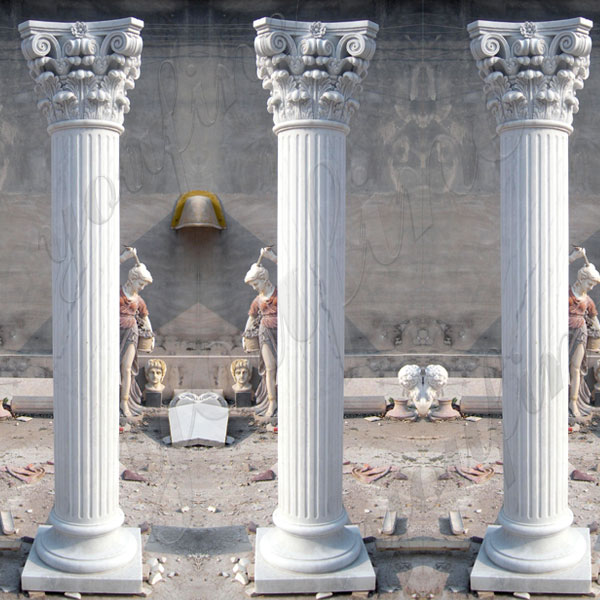Cupid and Psyche is one of the most romantic and symbolic themes in Western art history. It’s not only a mythical tale of love and the soul, but has also inspired countless artists. Antonio Canova’s “Psyche Awakening from Cupid’s Kiss” is considered the pinnacle of Neoclassical sculpture. This article will delve into the symbol, historical origins, famous artistic versions, and the myths behind the Cupid and Psyche statues.
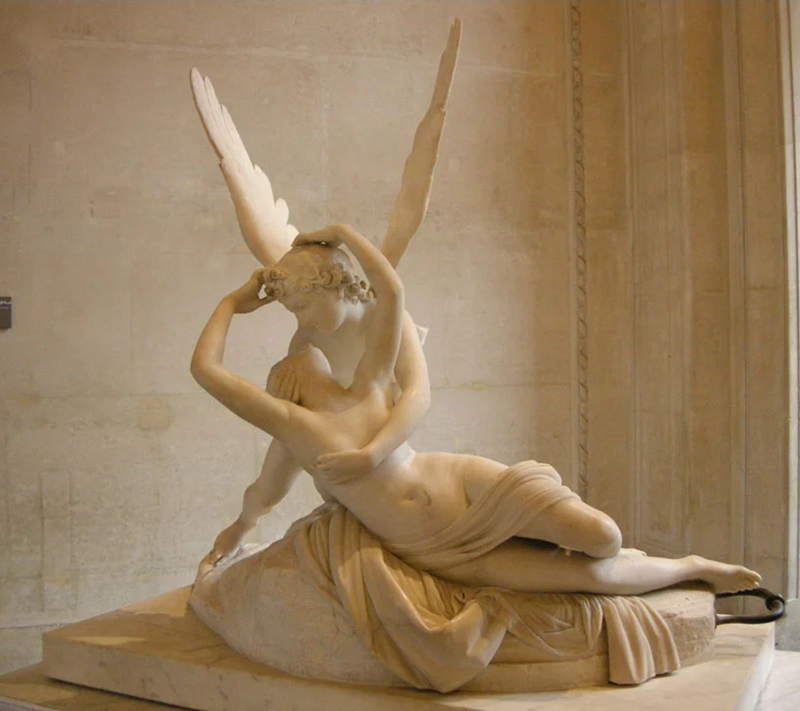
What do the Cupid and Psyche Statues Symbolize?
Cupid represents love and desire, while Psyche means “soul” or “butterfly” in Greek. This group of statues symbolizes the union of love and soul, implying that true love can transcend trials, triumph over death, and bring rebirth and eternal happiness.
The fusion of spirit and body: Cupid’s embrace symbolizes the union of love and soul.
Rebirth and redemption: Psyche’s awakening symbolizes the soul’s rebirth through the power of love.
The ideal of beauty and harmony: The posture, proportions, and details of the statues convey the ultimate pursuit of classical aesthetics.
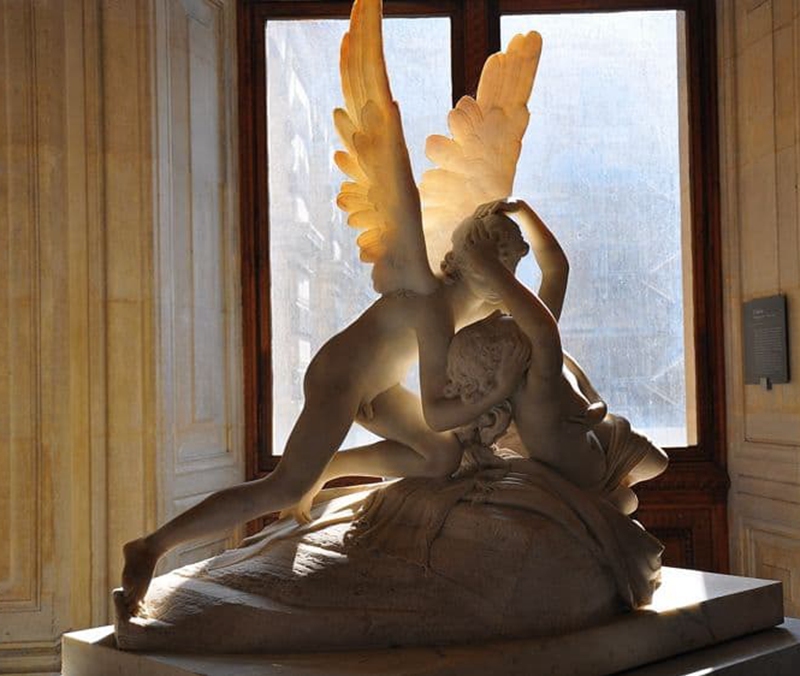
The History of Cupid and Psyche Sculptures
The theme of Cupid and Psyche did not emerge from thin air; rather, it is rooted in ancient Greek and Roman mythology and has evolved gradually throughout art history. As early as the Roman period, Apuleius’s The Golden Ass fully chronicled their story, providing a textual foundation for later artistic creation.
During the Renaissance, with the revival of classical culture, this theme began to appear frequently in painting and sculpture, though primarily in narrative settings, such as Psyche opening the forbidden box and Cupid’s awakening.
It was not until the Neoclassical period of the late 18th and early 19th centuries that Antonio Canova pushed this theme to its extreme. He abandoned complex narratives and focused on the moment of Cupid kissing the awakening Psyche. His minimalist composition and perfect proportions imbued the sculpture with a timeless, static beauty, making it a benchmark for the genre.
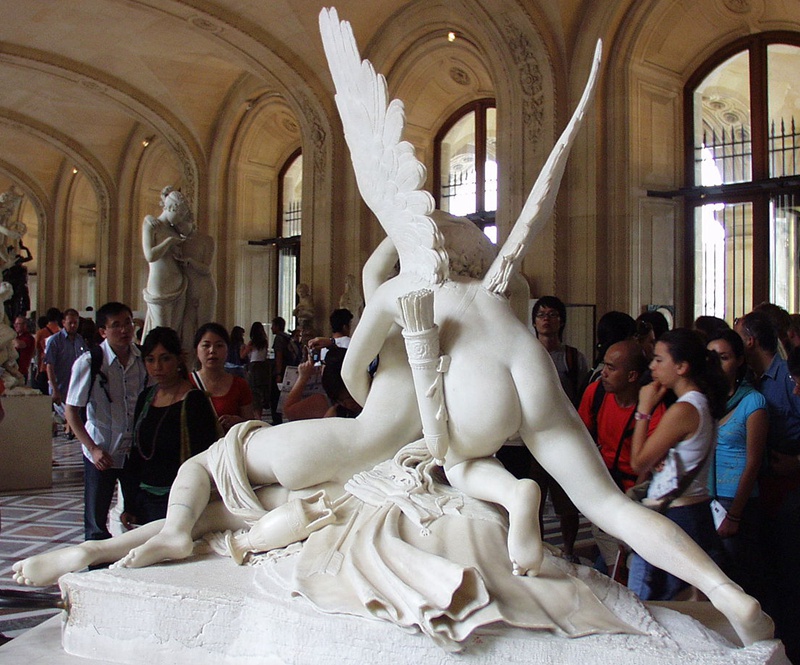
Who Created the Cupid and Psyche Statue?
While numerous sculptures depicting the theme of Cupid and Psyche exist, the most well-known artists include:
Antonio Canova
His masterpiece, “Psyche Revived by Cupid’s Kiss,” was commissioned in 1787 and completed in 1793.
The marble sculpture depicts Psyche awakened by Cupid’s kiss. The sculpture’s pyramidal composition, graceful movement, and exquisite detail showcase the soft texture of the marble.
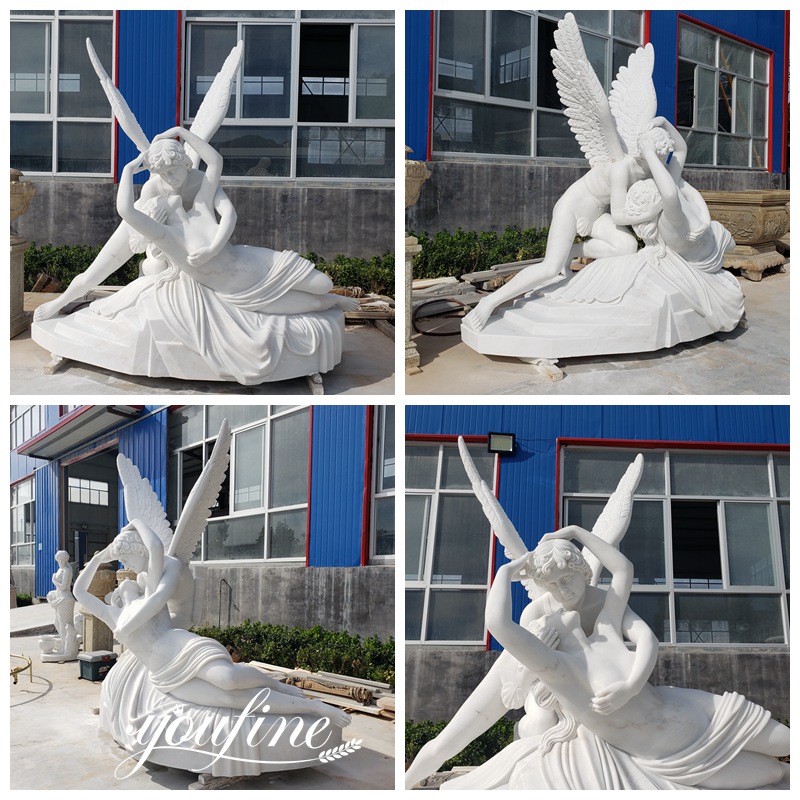
Johan Tobias Sergel
Johan Tobias Sergel, a Swedish artist, created his Cupid and Psyche sculpture in 1787. It depicts a kneeling Psyche and a standing Cupid gazing affectionately at each other. It is now in the National Museum in Stockholm.
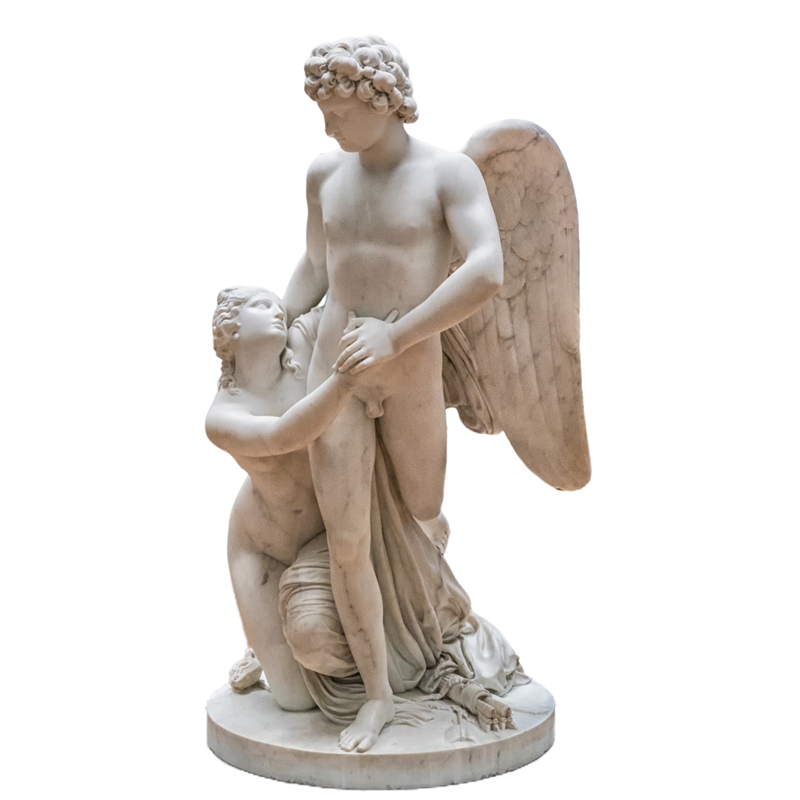
Bertel Thorvaldsen
This sculpture, Amor & Psyche, depicts Cupid and Psyche standing in embrace, contemplating a bowl. It exemplifies Thorvaldsen’s restrained, classical style. It is now in the Thorvaldsens Museum in Copenhagen.
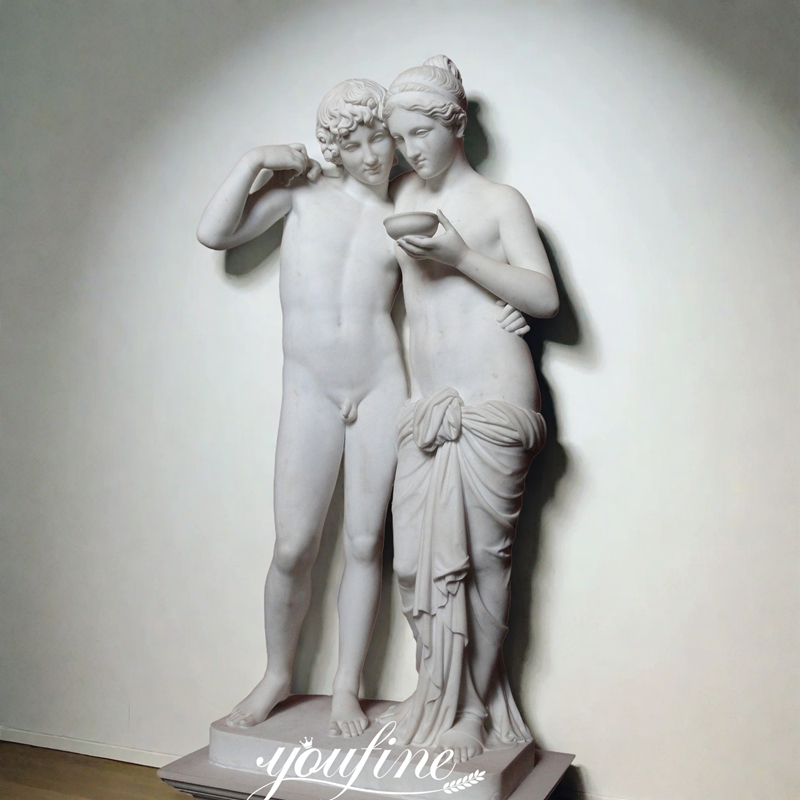
Charles-Auguste Freiking
Freiking was a mid-19th-century Belgian sculptor who reinterpreted the theme of Cupid and Psyche in his work “The Rapture of Psyche Sculpture.” His works emphasize heightened emotions and spiritual ecstasy, blending classical anatomy with Romantic representation. His sculptures radiate a sense of divine love and transcendence, reflecting the awakening of the soul in true emotion.
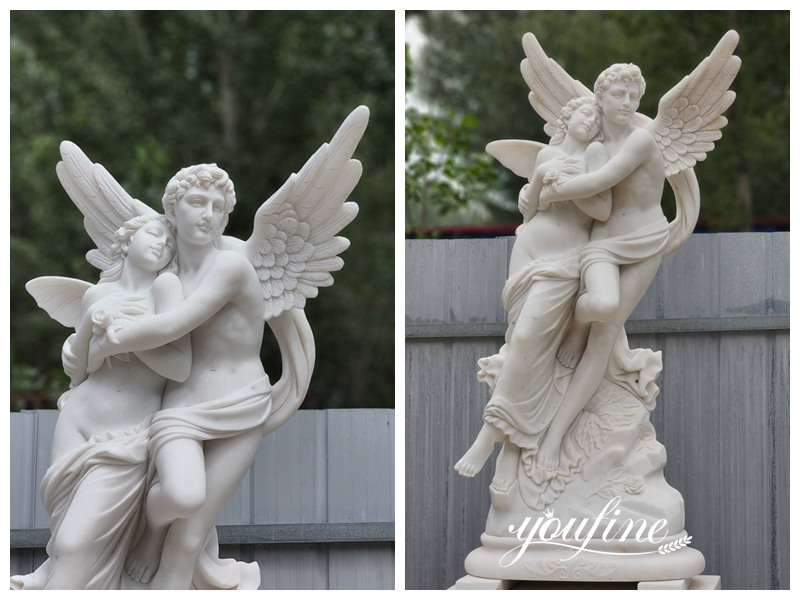
Interpretation of the Myth of Cupid and Psyche
The myth of Cupid and Psyche is full of fantasy and trials. Psyche was a beautiful princess whose beauty rivaled that of Venus (the mother of love), a source of jealousy. Venus sent her son Cupid to make Psyche fall in love with the ugliest creature in the world. However, upon seeing Psyche, Cupid was so captivated by her beauty that he was accidentally shot with his own arrow and fell deeply in love with her.
Cupid secretly met with Psyche, but demanded that she never look at his face. At the instigation of her sister, Psyche held a lamp at night to check on her, accidentally dripping hot oil onto Cupid, causing him to leave in anger. To regain her love, Psyche underwent numerous trials from Venus: sorting mixed grains, retrieving the Golden Fleece, and drawing water from the River Styx… Finally, exhausted and despairing, she fell asleep. Cupid broke free from his mother’s restraints and awakened her with an arrow. Moved by their love, Zeus granted Psyche immortality, allowing her to be with Cupid forever.
This story is not only a romantic romance, but also a metaphor for the fact that the soul (Psyche) must endure suffering before it can be eternally united with love (Cupid).
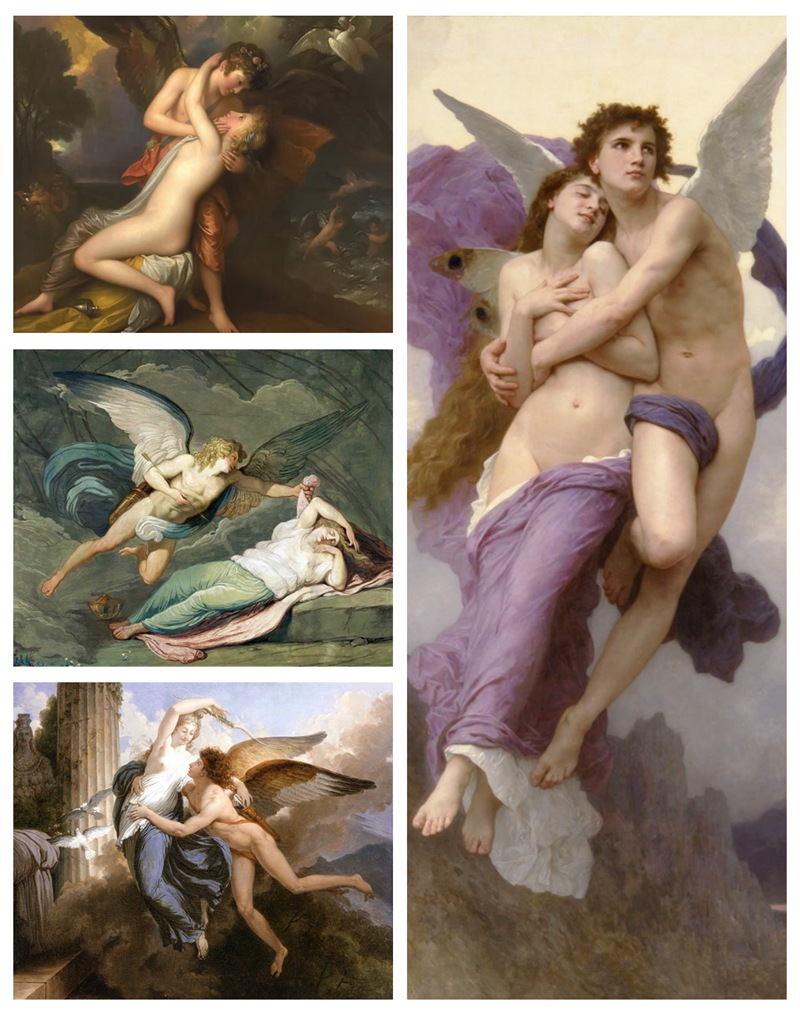
Where are the Cupid and Psyche Statues Now Located?
The Louvre Museum (Paris): Houses the original marble work by Canova, in 1798.
The Hermitage Museum (St. Petersburg): Houses another Canova version.
The Capitoline Museum (Rome): Houses classical Cupid and Psyche sculptures.
The Metropolitan Museum of Art (New York): Houses plaster casts and earlier versions related to Canova.
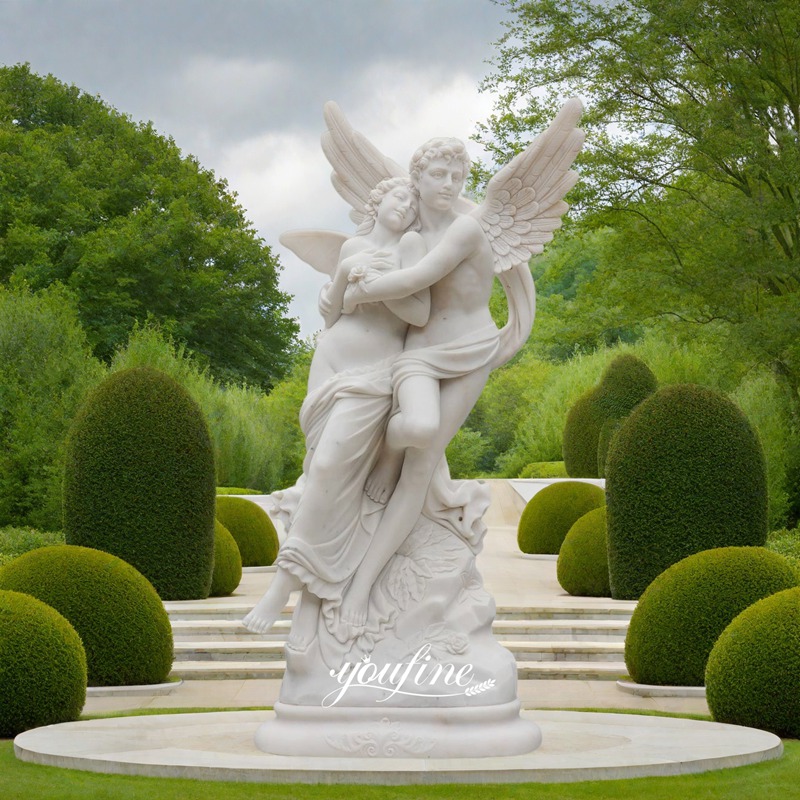
Comparison between the Cupid and Psyche Statue and Rodin’s The Kiss
Compared to Rodin’s The Kiss, while both depict the moment of a kiss, Canova’s work emphasizes idealized beauty and a tranquil eternity. The figures’ graceful postures and flowing lines resemble frozen poetry.
The Kiss, on the other hand, is imbued with dynamic tension and worldly passion, the tense muscles and ruffled folds of clothing conveying a primal emotional impulse.
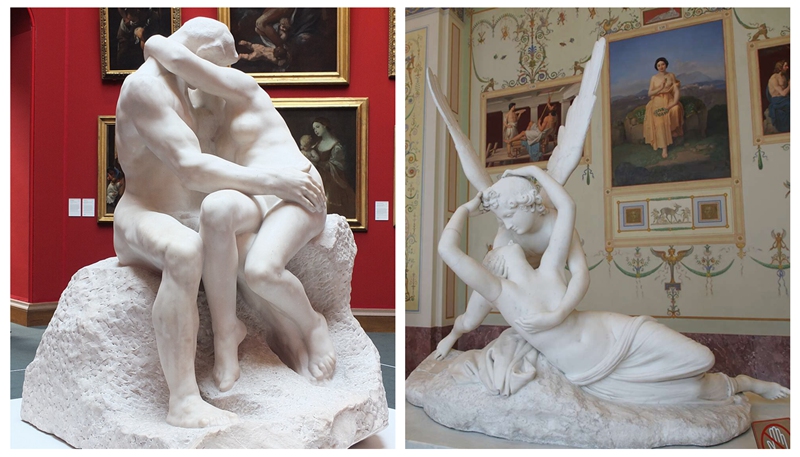
From myth to sculpture, the story of Cupid and Psyche has transcended millennia, finding eternal artistic life under Canova’s chisel. This statue is not only a tribute to love but also a profound interpretation of the “mutual fulfillment of the soul and love.” Like a silent vow, it speaks to humanity’s yearning for eternal love.


